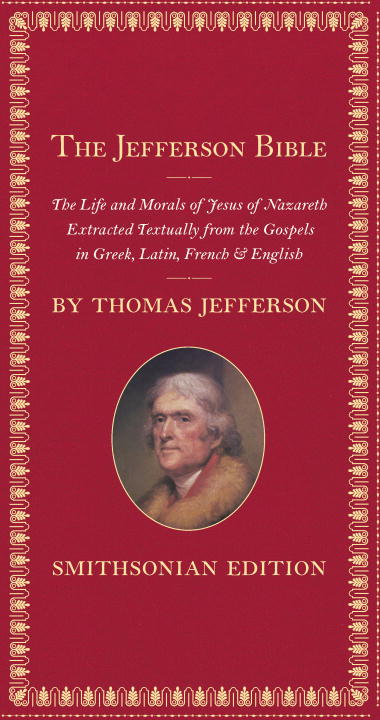The Jefferson Bible, or The Life and Morals of Jesus of Nazareth as it is formally titled, was Thomas Jefferson's effort to extract what he considered the pertinent doctrine of Jesus by removing sections of the New Testament containing supernatural aspects as well as perceived misinterpretations he believed had been added by the Four Evangelists. Using a razor, Jefferson cut and arranged selected verses from the books of Matthew, Mark, Luke and John in chronological order, mingling excerpts from one text to those of another in order to create a single narrative. After completion of The Life and Morals, about 1820, Jefferson shared it with a number of friends, but he never allowed it to be published during his lifetime. The most complete form Jefferson produced was inherited by his grandson, Thomas Jefferson Randolph and was published in 1895 by the National Museum in Washington.
Once published in black-and-white facsimile by the Government Printing Office in 1900 as a gift for new members of Congress, the Jefferson Bible has never before been published in colour in its complete form. The Jefferson Bible, Smithsonian Edition is an exact facsimile reproduction based on the original copy in the Smithsonian collections. The Jefferson Bible, Smithsonian Edition is as beautiful an object as was so painstakingly crafted by Thomas Jefferson himself.

